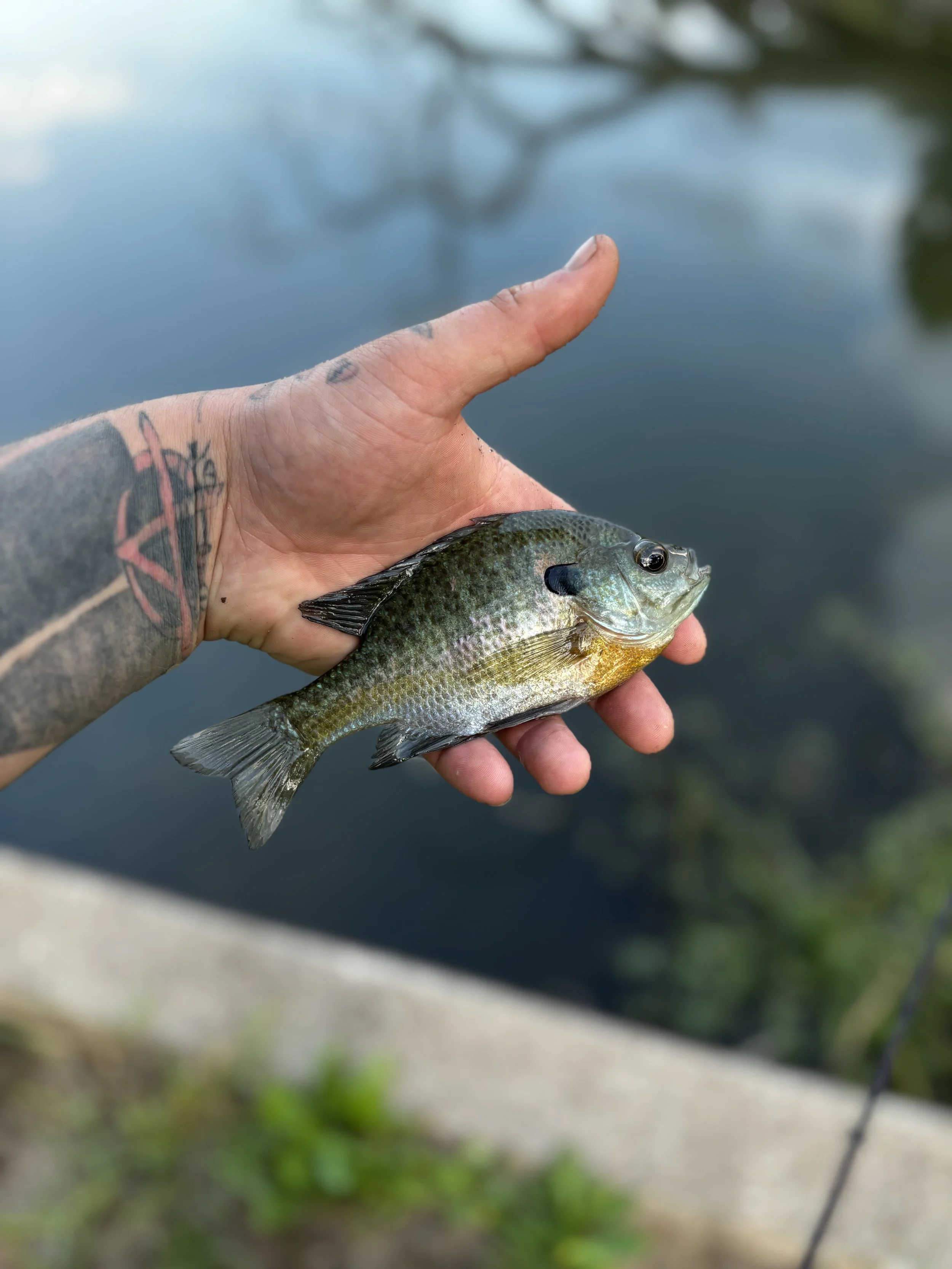Sunfish
In Nebraska lakes, sunfish are commonly found in shallow, weedy areas where they can feed and hide from predators. During the warmer months, especially late spring and summer, they gather near the shorelines, around submerged vegetation, docks, fallen trees, and rocky or sandy bottoms. These spots provide perfect habitat for spawning and feeding. Lakes like Branched Oak, Wagon Train, and Holmes Lake often have strong sunfish populations, including bluegill, green sunfish, and pumpkinseed. Whether you’re fishing from shore or a boat, targeting these calm, sunny, and structure-rich areas will usually lead to good action, especially if you’re using worms, small jigs, or bits of corn.
-
Insects and larvae – Mayflies, dragonflies, mosquitoes, and aquatic insect larvae
Worms – Earthworms and aquatic worms
Small crustaceans – Tiny crayfish and freshwater shrimp
Zooplankton – Especially when they’re young (fry)
Fish eggs – Including those of other sunfish or species
Algae and plant material – Occasionally nibble on vegetation or algae
-
Sunfish spawn in shallow, warm water—typically in 2 to 6 feet deep—during late spring to early summer, when water temperatures reach around 65–85°F (18–29°C).
-
Bluegill
Most common sunfish species
Deep, round body with a dark spot on the gill flap and vertical stripes
Often found in ponds, lakes, and slow-moving rivers
Green Sunfish
Stockier body with a big mouth (almost bass-like)
Greenish body with blue-green streaks on the face
Very aggressive and often found in shallow, weedy areas
Pumpkinseed Sunfish
Brightly colored with orange, yellow, and blue patterns
Red or orange spot on the gill flap
Often found in clear water near vegetation
Longear Sunfish
Named for its long, pointed gill flap
Bright orange belly and blue-green body
Prefers streams and clear lakes with rocky or sandy bottoms
Redear Sunfish (a.k.a. “Shellcracker”)
Olive-green body with red or orange edge on the gill flap (more noticeable in males)
Known for feeding on snails and other hard-shelled prey
Found more often in southern regions but occasionally stocked elsewhere
Bonus Fact:
All of these sunfish can hybridize with each other, creating hybrid sunfish that often grow larger and are sometimes stocked in ponds because of their fast growth and ease of catching. In Nebraska, the most commonly seen are bluegill, green sunfish, and pumpkinseed, with occasional hybrids or longear sunfish depending on the body of water.
I often find sunfish to be a delight as there’s always a new pattern when catching them and some days It couldn’t be easier to catch sunfish

